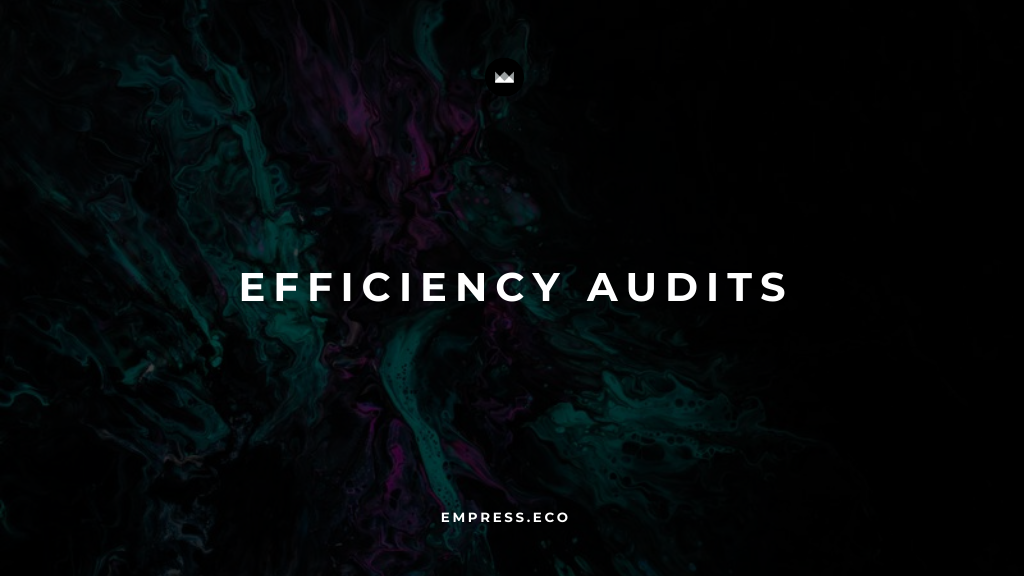
Efficiency Audits: Uncovering and Addressing Operational Inefficiencies to Boost Productivity
Table of Contents
Organizations are constantly seeking ways to enhance their productivity and maintain a competitive edge. One of the most effective strategies for achieving these goals is through efficiency audits. By systematically evaluating operational processes and workflows, businesses can identify inefficiencies that may be hindering their performance. Addressing these inefficiencies not only boosts productivity but also leads to significant cost savings, improved employee satisfaction, and overall operational excellence.
In this comprehensive guide, we’ll explore the benefits of conducting efficiency audits, provide strategies for implementing them effectively, and discuss the challenges businesses may encounter during the process.
The Value of Efficiency Audits
Efficiency audits serve as a diagnostic tool, allowing businesses to take a closer look at their internal processes and identify areas where improvements can be made. The goal is to optimize workflows, eliminate waste, and ensure that resources are being used as effectively as possible. Here are the key benefits of conducting efficiency audits:
1. Increased Productivity
At the core of efficiency audits is the drive to enhance productivity. Every business has processes that may have become outdated, redundant, or unnecessarily complicated over time. These inefficiencies can slow down operations, leading to delays, frustration, and missed opportunities.
For example, a company may discover that its document approval process involves multiple unnecessary steps that delay decision-making. An efficiency audit would identify these bottlenecks, allowing the organization to streamline the process by removing or automating redundant steps. The result is a more efficient workflow, enabling employees to focus on high-value tasks rather than getting bogged down in time-consuming procedures.
2. Cost Savings
Efficiency audits are a powerful tool for identifying and eliminating wasteful practices within an organization. By closely examining processes, companies can uncover areas where resources are being misallocated or underutilized. This can lead to significant cost savings, as businesses are able to reduce unnecessary expenses and improve their overall financial performance.
For instance, an efficiency audit might reveal that a company is spending excessively on manual data entry tasks that could be automated with the right software. By implementing an automated system, the company can reduce labor costs, minimize errors, and free up resources for more strategic initiatives.
3. Enhanced Process Understanding
Conducting an efficiency audit provides businesses with a comprehensive understanding of their current processes. This deep dive into operations highlights not only inefficiencies but also areas where processes are misaligned with business objectives.
For example, a manufacturing company might discover through an audit that certain production steps are not contributing to the final product's quality or speed of delivery. Understanding these disconnects allows the company to realign its processes with its strategic goals, ensuring that every aspect of operations contributes to the desired outcomes.
4. Improved Employee Satisfaction
When employees are burdened with inefficient processes, it can lead to frustration, low morale, and even burnout. Efficiency audits help to identify and rectify these issues, leading to a more streamlined and manageable workload for employees.
For example, if a customer service team is overwhelmed by repetitive tasks that could be automated, an efficiency audit could recommend the implementation of a chatbot to handle basic inquiries. This allows employees to focus on more complex and fulfilling aspects of their jobs, leading to higher job satisfaction and improved retention rates.
Implementing Effective Efficiency Audits
While the benefits of efficiency audits are clear, successfully implementing them requires a strategic approach. Below are the key steps businesses should take to conduct effective efficiency audits:
1. Define Objectives and Scope
The first step in conducting an efficiency audit is to clearly define the objectives and scope of the audit. This involves determining what you hope to achieve—whether it’s reducing costs, improving productivity, or enhancing customer satisfaction—and which processes or departments will be evaluated.
For example, a retail company might decide to focus its audit on the supply chain and inventory management processes, with the objective of reducing stockouts and improving delivery times. By narrowing the scope, the company ensures that the audit is manageable and targeted, allowing for more detailed and actionable insights.
2. Gather and Analyze Data
Data collection and analysis are at the heart of any efficiency audit. This step involves gathering quantitative and qualitative data on current processes, including performance metrics, employee feedback, and workflow documentation.
For instance, a finance department might collect data on the time it takes to process invoices, the number of errors encountered, and feedback from staff on the challenges they face. Analyzing this data can reveal patterns and trends that point to inefficiencies, such as unnecessary steps in the approval process or a lack of automation tools.
3. Engage Employees
Employees are often the best source of information about where inefficiencies lie, as they deal with the processes on a daily basis. Engaging employees in the audit process not only provides valuable insights but also helps to build buy-in for any changes that may be implemented as a result of the audit.
For example, during an audit of a customer support center, employees might highlight that they spend a significant amount of time searching for information across multiple systems. This feedback could lead to the implementation of a unified knowledge management system, streamlining access to information and reducing response times.
4. Utilize Benchmarking
Benchmarking involves comparing your organization’s processes against industry best practices or competitors to identify gaps and opportunities for improvement. This external perspective can be invaluable in setting realistic goals and developing targeted strategies for optimization.
For instance, a logistics company might benchmark its delivery times and costs against industry leaders to identify areas where it can improve its own operations. If the audit reveals that competitors are using more advanced routing software to optimize deliveries, the company might decide to invest in similar technology to close the gap.
5. Develop and Implement Solutions
Once the audit is complete and inefficiencies have been identified, the next step is to develop and implement solutions. This involves creating a detailed action plan that outlines the changes to be made, the resources required, and the timeline for implementation.
For example, if an audit of a manufacturing process reveals that machine downtime is a major issue, the company might implement a predictive maintenance program to address the problem. This program would use data analytics to predict when machines are likely to fail and schedule maintenance before breakdowns occur, reducing downtime and increasing productivity.
6. Monitor and Adjust
The work doesn’t end once solutions are implemented. Continuous monitoring and adjustment are crucial to ensuring that the changes lead to the desired outcomes. Businesses should regularly review performance metrics, seek feedback from employees, and be prepared to make further adjustments as needed.
For example, after implementing a new inventory management system, a retail company might monitor key metrics such as stock levels, turnover rates, and customer satisfaction to ensure that the system is functioning as expected. If any issues arise, the company can quickly address them and refine the system to better meet its needs.
Challenges and Considerations
While efficiency audits offer numerous benefits, businesses must be mindful of potential challenges that can arise during the process. Understanding these challenges and planning accordingly can help ensure a successful audit.
1. Resistance to Change
One of the most common challenges in efficiency audits is resistance to change. Employees may be hesitant to adopt new processes or technologies, particularly if they have been doing things a certain way for a long time. This resistance can slow down or even derail the implementation of improvements.
To overcome this challenge, it’s important to involve employees in the audit process from the beginning, clearly communicate the benefits of the proposed changes, and provide training and support to help them adapt. Building a culture of continuous improvement can also help reduce resistance and encourage employees to embrace change.
2. Resource Allocation
Conducting a thorough efficiency audit requires time, effort, and resources. Businesses must allocate sufficient personnel and budget to ensure a comprehensive evaluation and successful implementation of recommendations.
For example, if a company is conducting an audit of its IT infrastructure, it may need to invest in specialized software tools, hire external consultants, or allocate additional staff to the project. While these investments can be significant, the long-term benefits of increased efficiency and cost savings often justify the initial outlay.
3. Continuous Improvement
Efficiency audits should not be seen as a one-time exercise. To maintain operational excellence, businesses need to embrace a culture of continuous improvement. This involves regularly conducting audits, monitoring performance metrics, and being proactive in making adjustments as needed.
For instance, a company that conducts an annual efficiency audit might use the findings to make incremental improvements each year, gradually optimizing its operations and staying ahead of the competition. By continually refining processes and adapting to changing business needs, organizations can ensure sustained success.
Conclusion
Efficiency audits are a powerful tool for businesses seeking to identify and address operational inefficiencies. By systematically evaluating processes and implementing targeted improvements, companies can enhance productivity, reduce costs, and create a more positive work environment for employees. As organizations strive for operational excellence, regular efficiency audits will be essential for maintaining a competitive edge and achieving long-term success.
Whether your business is looking to streamline operations, improve resource allocation, or enhance employee satisfaction, efficiency audits offer the insights and guidance needed to drive meaningful change. By embracing this strategic approach, businesses can position themselves for sustained growth and success in an increasingly competitive marketplace.
Empress Newsletter
Join the newsletter to receive the latest updates in your inbox.



